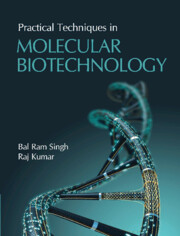Appendix 3 - Statistics
Published online by Cambridge University Press: 15 October 2021
Summary
In the biochemistry laboratory, as in many other branches of chemistry, the statistical treatment of data is of the utmost importance for the accurate reporting of results. The unique nature of the biochemical sample places an even greater importance on said statistical processing. The biochemical sample is usually the result of many hours of chromatographic purification. The same sample usually degrades to an unusable status in a very short period of time and is more often than not at a very low concentration to begin. The biochemical sample characteristics listed above infer that characterization protocols must be performed quickly and repeated numerous times. Prior to the mention of the basic statistical analysis that will be used you will need to be familiar with the types of errors you will encounter in biochemical experimentation.
Statistical Terms and Definition
Accuracy: The closeness of an experimental measurement to the true value.
Precision: Is also sometimes called reproducibility, which is scattering of experimental value. The precision of a series of measurements refers to the closeness of the values obtained from the identical measurements of a quantity.
Errors in Biochemical Experimental Data
It would be impossible to explain the types of errors found in gathering biochemical data without asking the reader to keep in mind the definitions of Precision and Accuracy. With the above mentioned definitions at hand it is easier to delineate the following types of errors.
First, biochemical analysis can be affected by random (or indeterminate) errors. The effects of a random error can cause the results to be scattered around a mean value (the definition of mean will follow shortly). Ultimately, an indeterminate error is a reflection of the precision with which the data is measured. Most random errors arise in a system where the method of measurement is lengthened to its maximum sensitivity. The resulting random fluctuations in measurements are the effects of the random error contributions in total. In general, random errors of a measurement are the cumulative effects of many small random errors, which cannot be measured individually.
Second, systematic (or determinate) errors produce a mean value for a set of results that differs from an accepted value. Therefore, a determinate error causes the data from a series of measurements to vary either all high or low. Consequently, systematic errors are a reflection of the accuracy of the measurements.
- Type
- Chapter
- Information
- Practical Techniques in Molecular Biotechnology , pp. 324 - 330Publisher: Cambridge University PressPrint publication year: 2022

